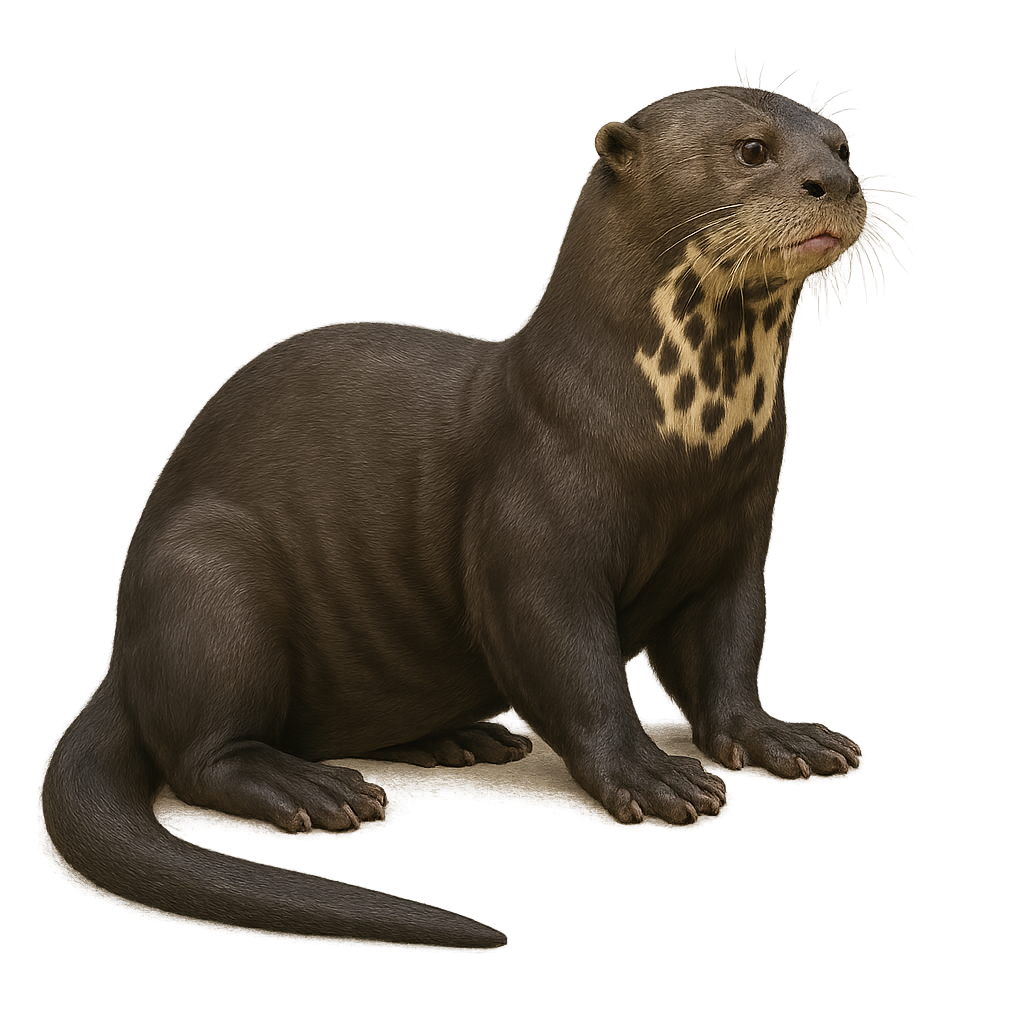Your wildlife photography guide.
Explore the giant otter in detail, study its behavior, prepare your shots.
Where to observe and photograph the giant otter in the wild
Learn where and when to spot the giant otter in the wild, how to identify the species based on distinctive features, and what natural environments it inhabits. The WildlifePhotographer app offers tailored photography tips that reflect the giant otter’s behavior, helping you capture better wildlife images. Explore the full species profile for key information including description, habitat, active periods, and approach techniques.
Giant otter
Scientific name: Pteronura brasiliensis

IUCN Status: Endangered
Family: MUSTELIDAE
Group: Mammals
Sensitivity to human approach: Very shy
Minimum approach distance: 30 m
Rut period: July to August
Gestation: 65-70 jours
Births: September to October
Habitat:
slow-moving rivers, marshes and floodplain lakes
Activity period :
Primarily active during the day, with peak activity in the morning and late afternoon.
Identification and description:
The giant otter (Pteronura brasiliensis) is a semi-aquatic mustelid measuring 1.5–1.8 m in length (including tail) and weighing 22–32 kg. It inhabits slow-moving rivers, marshes, and floodplain lakes in tropical South America from the Orinoco to the Amazon. Highly social, it lives in family groups of 4–20 individuals, digs riverbank dens, and uses loud vocalizations. A specialist carnivore, it hunts fish and crustaceans by diving, propelled by its powerful tail. Females give birth in the dry season (August–September), and group members reinforce bonds through mutual grooming.
Recommended lens:
600 mm – adjust based on distance, desired framing (portrait or habitat), and approach conditions.
Photography tips:
To photograph the giant otter, position yourself in a low-profile hide by the water during the dry season. Use a telephoto lens ≥600 mm on a monopod or gimbal for stability. Shoot in shutter-priority at 1/2000 s or faster, aperture f/8–f/11 for sharpness. Enable continuous autofocus and capture in RAW. Anticipate dives and vocalizations to time your shots precisely.
The WildlifePhotographer App is coming soon!
Be the first to explore the best nature spots, track rutting seasons, log your observations, and observe more wildlife.
Already 1 439 wildlife lovers subscribed worldwide

